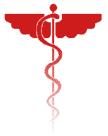 |
The LSUHSC New Orleans Presents The Student Procedure Manual |
 |
 |
The LSUHSC New Orleans Presents The Student Procedure Manual |
 |
Incision & Drainage
by Ashley Stuckey
Indications
Prerequisites
Equipment
Procedure
Complications
Follow-up
References